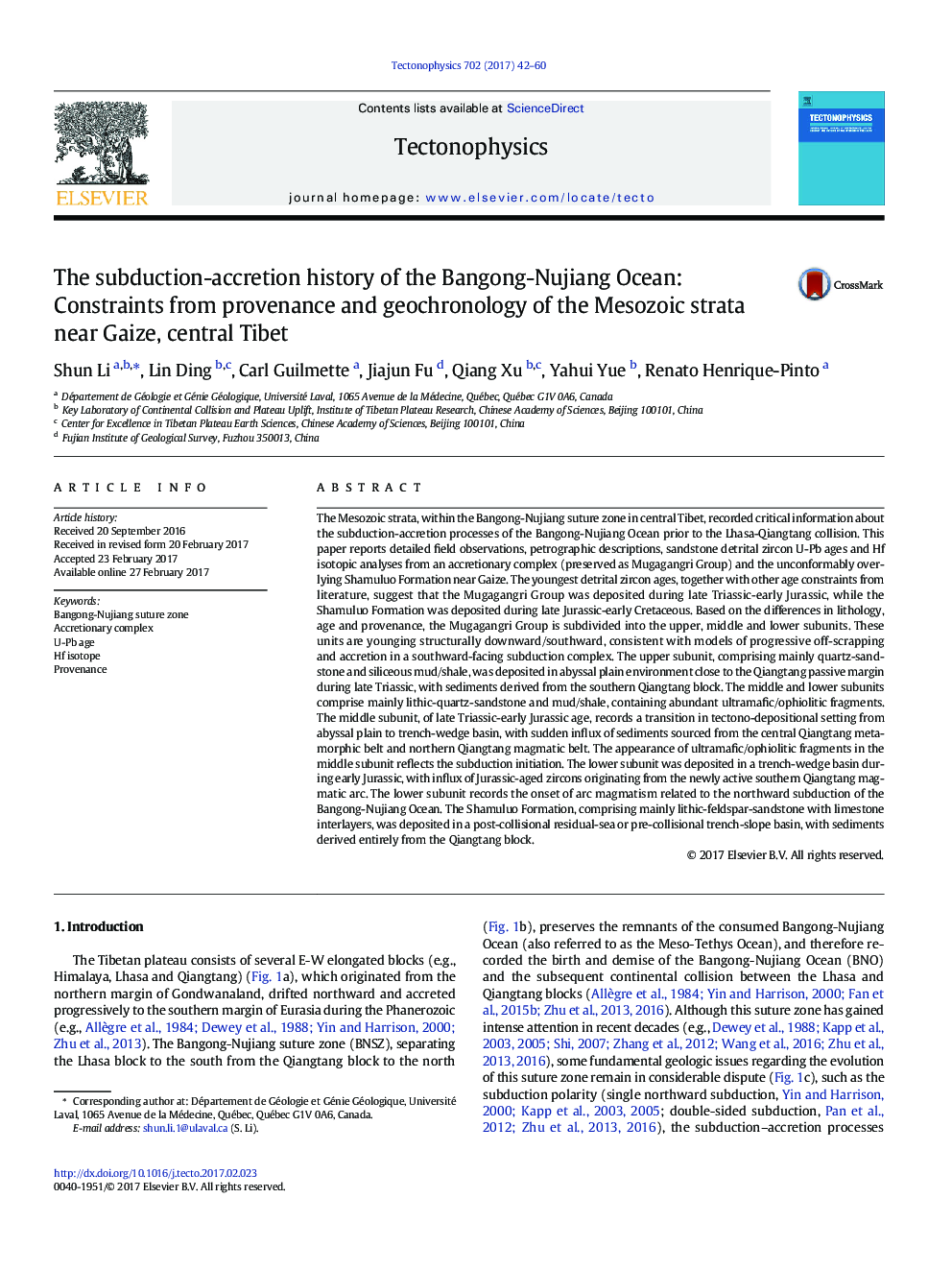| کد مقاله | کد نشریه | سال انتشار | مقاله انگلیسی | نسخه تمام متن |
|---|---|---|---|---|
| 5781656 | 1636701 | 2017 | 19 صفحه PDF | دانلود رایگان |

- The Mugagangri Group is explained as a southward-facing accretionary complex.
- The Shamuluo Formation was deposited in a residual-sea or trench-slope basin.
- The northward subduction of the Bangong-Nujiang Ocean began at ~Â 195-190Â Ma.
- The associated arc-magmatism in southern Qiangtang block initiated at ~Â 185Â Ma.
The Mesozoic strata, within the Bangong-Nujiang suture zone in central Tibet, recorded critical information about the subduction-accretion processes of the Bangong-Nujiang Ocean prior to the Lhasa-Qiangtang collision. This paper reports detailed field observations, petrographic descriptions, sandstone detrital zircon U-Pb ages and Hf isotopic analyses from an accretionary complex (preserved as Mugagangri Group) and the unconformably overlying Shamuluo Formation near Gaize. The youngest detrital zircon ages, together with other age constraints from literature, suggest that the Mugagangri Group was deposited during late Triassic-early Jurassic, while the Shamuluo Formation was deposited during late Jurassic-early Cretaceous. Based on the differences in lithology, age and provenance, the Mugagangri Group is subdivided into the upper, middle and lower subunits. These units are younging structurally downward/southward, consistent with models of progressive off-scrapping and accretion in a southward-facing subduction complex. The upper subunit, comprising mainly quartz-sandstone and siliceous mud/shale, was deposited in abyssal plain environment close to the Qiangtang passive margin during late Triassic, with sediments derived from the southern Qiangtang block. The middle and lower subunits comprise mainly lithic-quartz-sandstone and mud/shale, containing abundant ultramafic/ophiolitic fragments. The middle subunit, of late Triassic-early Jurassic age, records a transition in tectono-depositional setting from abyssal plain to trench-wedge basin, with sudden influx of sediments sourced from the central Qiangtang metamorphic belt and northern Qiangtang magmatic belt. The appearance of ultramafic/ophiolitic fragments in the middle subunit reflects the subduction initiation. The lower subunit was deposited in a trench-wedge basin during early Jurassic, with influx of Jurassic-aged zircons originating from the newly active southern Qiangtang magmatic arc. The lower subunit records the onset of arc magmatism related to the northward subduction of the Bangong-Nujiang Ocean. The Shamuluo Formation, comprising mainly lithic-feldspar-sandstone with limestone interlayers, was deposited in a post-collisional residual-sea or pre-collisional trench-slope basin, with sediments derived entirely from the Qiangtang block.
Journal: Tectonophysics - Volume 702, 4 April 2017, Pages 42-60